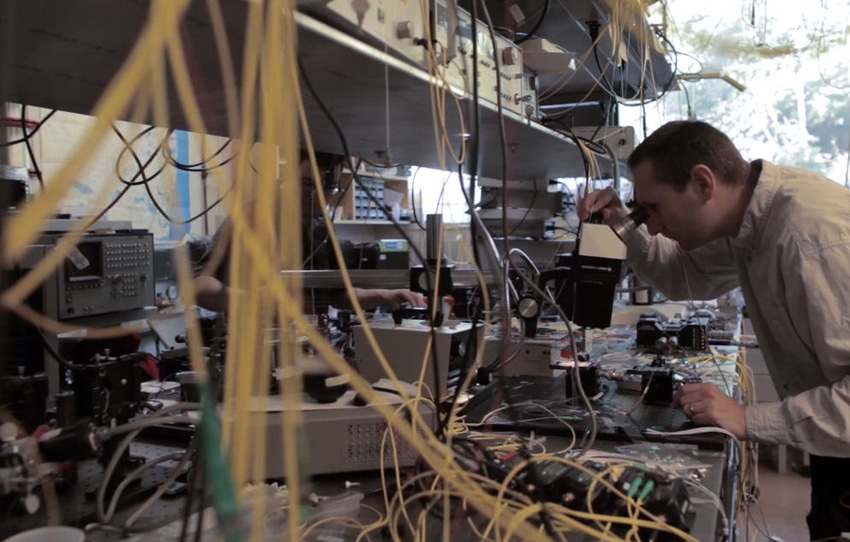Gigabit society – HA! We laugh at your feeble gigabit aspirations, inferred Nokia, DT and the University of Munich after demonstrating 1 Terabit-per-second transmission rates over fibre.
September 16, 2016

Gigabit society – HA! We laugh at your feeble gigabit aspirations, inferred Nokia, DT and the University of Munich after demonstrating 1 Terabit-per-second transmission rates over fibre.
The optical dream team achieved this unprecedented speed – which would enable you to download the entire internet in one nanosecond – with a new modulation technique implausibly called Probabilistic Constellation Shaping (PCS) as well as a light dusting of Quadrature Amplitude Modulation (QAM).
For those readers who have been living in a cave, PCS modifies the probability with which constellation points – the alphabet of the transmission – are used, of course. Gone are the dark days of all constellation points using the same frequency. Now PCS uses constellation points with high amplitude less frequently than those with lesser amplitude to transmit signals that, on average, are more resilient to noise and other impairments.
It also goes without saying that this allows the transmission rate to be tailored to ideally fit the transmission channel, delivering up to 30 percent greater reach. This is allowing boffins such as these to get closer to The Shannon Limit, which as we all know is the theoretical transfer rate of a given channel.
“Future optical networks not only need to support orders of magnitude higher capacity, but also the ability to dynamically adapt to channel conditions and traffic demand,” elucidated Marcus Weldon, president of Nokia Bell Labs & Nokia CTO. “Probabilistic constellation shaping offers great benefits to service providers and enterprises by enabling optical networks to operate closer to the Shannon Limit to support massive datacenter interconnectivity and provide the flexibility and performance required for modern networking in the digital era.”
“To guarantee a high customer experience for future services we need optical transmissions with increased capacities, reach and flexibility over deployed fibre infrastructures,” concurred Bruno Jacobfeuerborn, CTO of DT. “Deutsche Telekom provides a unique network infrastructure to evaluate and demonstrate such highly innovative transmission technologies for example. Furthermore, it also supports higher layer test scenarios and technologies.”
“Information theory is the mathematics of digital technology, and during the Claude E. Shannon centenary year 2016 it is thrilling to see his ideas continue to transform industries and society,” expounded Gerhard Kramer, Professor at the Technical University of Munich. “Probabilistic constellation shaping, an idea that won a Bell Labs Prize, directly applies Shannon’s principles and lets fibre optic systems transmit data faster, further, and with unparalleled flexibility.
The success of the close collaboration with Nokia Bell Labs, who further developed the technology, and Deutsche Telekom T-Labs, who tested it under real conditions, is satisfying confirmation that TUM Engineering is a label of outstanding quality, and that TUM teaching gives our students the intellectual tools to compete, succeed and lead globally.”
In other Nokia news its UK team took the corporate credit card down to Ikea recently to equip its new Cloud Design Centre with edgy, inspiring furniture. Nokia is hoping the awkward white stools and visually jarring carpets at the Fleet facility will inspire its customers to get better at cloud in a bleeding-edge, DevOps-y kind of way.

About the Author(s)
You May Also Like








.png?width=300&auto=webp&quality=80&disable=upscale)


_1.jpg?width=300&auto=webp&quality=80&disable=upscale)


.png?width=800&auto=webp&quality=80&disable=upscale)